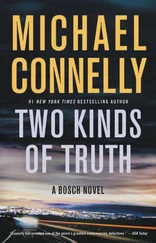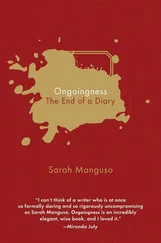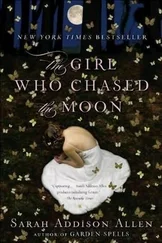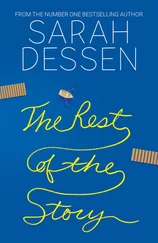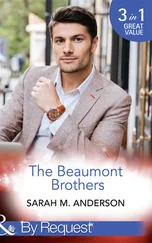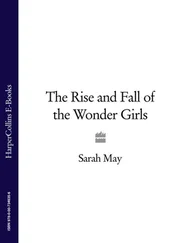I belong to an artists’ union and pay for its group health plan with freelance money and with the money I inherited when my grandfather died.
I’m thirty-two years old and I’m an unwed, adjunct-teaching, freelancing renter. But New York is full of people like me. Everyone in the city I know who owns property or has kids has one of two things: a full-time job or rich parents.
There exist several rationalizations for my life. I’m holding out for a teaching job that suits me. My parents aren’t rich. A full-time office job would sap my energy. I don’t want to buy a place until I’m sure I won’t meet someone who’ll share the down payment with me. And each of these explanations is reasonable enough.
But I know the real explanation is that I haven’t lost the fear that at any moment I will have to quit my job, say goodbye to my friends, leave my home, and go to the hospital not knowing when, or in what condition, I’ll be discharged.
My disease has been in complete remission for seven years, but I still act as if I expect it to come back tomorrow.
In 1997 I stubbed my toe on the leg of a cast-iron chair and bandaged my purple foot and tore the insole out of a sneaker so I could fit my foot into it.
After watching me limp for a few days, my boss at the magazine made me go to a clinic, where they took an X-ray and announced I had three fractures.
In 2000, the first night I was back in New York after graduate school, I went to a roller-skating party at Chelsea Piers. I was curving left on my skates, at the narrow part of the oval rink, and lost my balance and fell backward. I caught myself on the heel of my right hand, and my arm hyperextended and my radius hit my humerus very hard and broke.
I’d felt the bone break, but just to be sure, I skated to a pay phone and called my friend’s father in St. Louis. He was an army doctor. He asked me how my arm and hand felt when I moved it up, down, around, how my fingers felt. Then he said I should go to an ER and have an X-ray taken.
I thanked him and thought to myself, Well, so I’ll have a broken arm for a while. I wasn’t going to another ER ward ever again. Not if I were conscious.
Five days later, while trying to chop carrots with an arm I knew was broken, I called my friend Vivian and said I wouldn’t be able to cook dinner after all. I had invited her over to prove my arm wasn’t just functional — it was good enough to julienne carrots. I hailed a gypsy cab and told the driver to take me to the nearest hospital. I should have taken the subway to a good hospital on the Upper East Side, but I didn’t know any better, so I wound up at Woodhull Medical Center.
In the Emergency waiting room were two men in orange jumpsuits, handcuffs, and leg irons, covered in blood, eyes swollen shut, and two or three police escorts for each of them.
A nurse asked me if I would please come into a ward to translate for a Polish patient, and I told her I didn’t speak Polish, and she stared at me until I noticed I was the only white person in the waiting room. The only pale white people treated at Woodhull were Polish immigrants from Greenpoint.
A doctor took an X-ray and gave me a sling and told me to come back in a week. I didn’t. The radial head fracture didn’t heal properly, but I don’t mind.
I’ve always had health insurance — if I relapsed without insurance, my parents would be homeless within a year — but other than that visit to Woodhull, I didn’t see a doctor for two years after I got out of lockdown.
In 2004 I fell on my kneecap while chasing my friend’s dogs in an ice storm in rural New Jersey. I drove myself to an orthopedist, skidding all the way, knowing I’d need surgery to fish out the bone chips. God, it would be horrible. I’d be admitted to the bone ward and everything would go back to the way it was when I was helpless.
But all the calcium supplements I’d taken, all the miles I’d run, had made my bones strong again, and I hadn’t broken my kneecap.
Even now, when I crack a bone on something hard, I still think I’ve fractured it, and in a flash I can see my wasted body in a bed with side rails, but I haven’t broken any bones since the night I broke my arm at Chelsea Piers.
For years I liked thinking of the ways I would erase all traces of the disease.
First I would stop taking the steroids.
Then I would have someone unclasp the impossible clasp of my MedicAlert bracelet.
Then I would go to physical therapy every day and my muscles would grow, and my heart and lungs would strengthen, and the fat deposits in my face and on my upper back would melt away, and I would run three miles along the Charles River, which was what I did at least twice a week during the month before the diagnosis.
I would apply expensive creams that would dry up the steroid acne.
I would have my teeth bleached of their tetracycline stains.
And so on.
Finally I would have plastic surgery for the thirty scars on my chest from the four central lines. I ruminated on that surgery obsessively. It was the last thing! The last thing, and then all evidence of the disease would be gone forever. No one, not even I, would be able to tell I’d been so sick.
I stared at the scars in mirrors. I could point to the four large ones without a mirror, without even looking down. I could practically feel them on me.
Once the disease went into its most recent remission, the one that’s still going on, I got fit again, just as I’d planned.
In 1996, I’d given all of my scoop-necked tops to my roommate, as it would have been rude to walk around with a big wound and a couple of tubes flopping around, scaring everyone.
For years after the line was out, I didn’t wear anything that exposed the scars.
But now that I look quite healthy, I like exposing them, and I don’t want the plastic surgery anymore.
I grew used to being sick and looking forward to recovering.
Then I grew used to being well again for a short while, knowing I’d be sick again sooner or later.
Then I grew used to having no prognosis at all, because with a mysterious disease, all things are possible.
My existence shrank from an arrow of light pointing into the future forever to a speck of light that was the present moment. I got better at living in that point of light, making the world into that point. I paid close attention to it. I loved it very much.
And then one day, my life was a ray again, and the point was gone.
I tried to find that point after the latest, longest remission began.
I thought of the point as a moment in spacetime where I could be free of all memory and all desire — a point that existed apart from everything before and after it.
Sometimes I can feel myself getting close to finding the thing in spacetime I lost by getting well.
I didn’t start writing this until my body made another decision.
The day before the decision I wrote, Can’t catch my breath all morning because of a wildness in my body that is like birds flying me toward his body.
The next day I wrote, I resisted as long as I could. A narrator must keep a safe distance from the story, but a lyric speaker must occupy the lyric moment as it’s happening. Or so it seems to me at this moment.
A crow stands outside my window all day, reminding me of the best thing about my life — that it ends.
I think my body’s decision shone a light on the memory that once my body steered me. Or that it steers me.
How long was I sick?
Читать дальше

